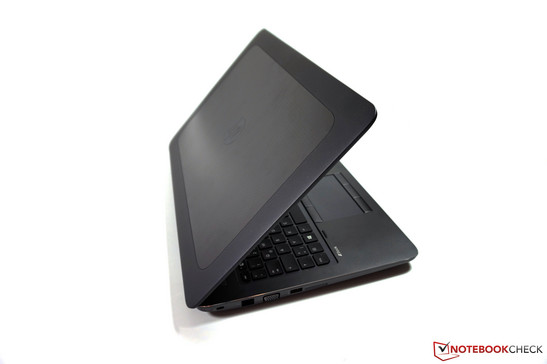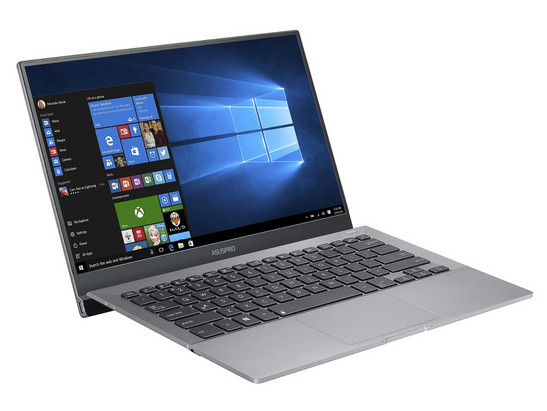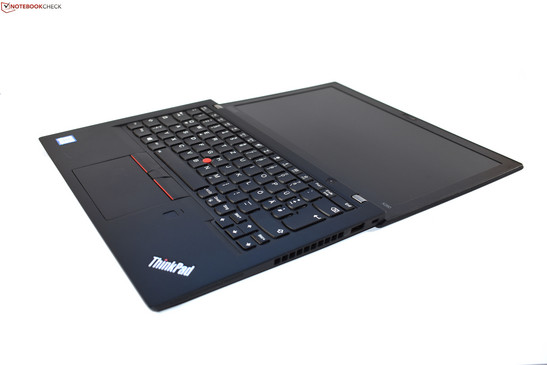Business Notebook Categories
Introduction
The business notebook landscape might not be as varied or as exciting as the consumer categories, and it certainly doesn’t grab as many headlines. But there is actually a surprisingly large number of devices to choose from with different styles depending on the final usage scenario. Whether your business needs a sturdy workhorse, a powerful workstation, a traveling ultraportable, or a secure thin-client, there is an option for you.
The notebooks shown below are examples from our recent reviews that fit into each category for comparison purposes. This isn't a "best of" ranking and brands are listed alphabetically.
Business Lines/Workhorses
This generic category is what the majority of readers will think of when someone mentions business notebooks. These are the models that fit into most manufacturers ‘business’ product lines with a focus on connectivity, docking stations, stability, and durability.
On the connectivity front, it is standard to have three or four USB 3 ports, HDMI and/or VGA for projectors, and often a 10/100/1000 mbps LAN port is present. In the last couple of years, it has become increasingly common for one of the USB 3 ports to now be a USB-C one, and the VGA plug is starting to disappear as fewer legacy projectors remain in circulation.
While almost any laptop can be connected to a third-party docking station using USB 3, USB-C, or Thunderbolt, business models tend to come with a proprietary docking connector on the underside. This slot lines up with guide pins on manufacturer-provided docking stations for rapidly clicking into place or for quick release via a lever. USB-C and Thunderbolt are making these connectors redundant, but in the past they offered higher bandwidth and a more seamless experience than the slower USB docks. Its main advantages today are ergonomic designs that act as a laptop stand and backward compatibility that delays the need to buy dozens or even hundreds of new USB-C/Thunderbolt docks.
Business notebooks tend to utilize sturdy designs that can withstand the abuse of being transported by users who don’t actually own the device and therefore might be a little more careless. We also find these models have chassis that are easy to open up for cleaning or part replacement.
Examples include:
Workstations
Workstations are the real powerhouses of the business notebook world. For about a decade from the late 1990s into the 2000s, we had this recurring theme of reviewers and consumers declaring successive generations of notebooks as “true desktop replacements.” The idea was that these laptops had the port selection and raw performance needed to be legitimate replacements for most people’s desktop computers, i.e. to the point where you weren’t losing anything that mattered to the general public. Most will agree that we met that point around the mid to late 2000s.
The more intensive workloads that workstations are subjected to require strong multithreaded performance, large quantities of RAM (sometimes ECC), and workstation GPUs designed with a focus on rendering and computational tasks instead of gaming. The last couple of generations have reached the point where a notebook can now be a true replacement for a desktop workstation.
There are some concessions in the CPU department, though. Intel’s 8th generation Xeons plus AMD's Ryzen and Threadripper chips have made 8C/16T and 16C/32T desktop workstations a possibility for professionals, but workstation laptops generally max out at 6C/12T (although you occasionally see 8C/16T Ryzens). While these laptops have noticeably lower thread counts than current gen desktop workstations, they are on par with a standard workstation from the previous generation, such as the 7th gen Kaby Lake.
Thanks to Nvidia’s Pascal architecture, there is less of a difference in performance of the Quadro graphics cards used in desktops versus notebooks. The rule of thumb is to apply an approximate 10% reduction in performance on the mobile cards, similar to what we see in the gaming-orientated GTX series.
Workstation-branded notebooks from most OEMs will have four DIMM slots; therefore, it is normal for them to include options of 32 GB or 64 GB of DDR4 memory, like their desktop brethren.
Examples include:
Road Warriors/Ultraportable
A disproportionately large portion of reader interest is directed towards our reviews of devices that are considered “thin and light” within each of their respective categories. This enthusiasm for compact computers is possibly at its strongest within the ultraportable category of 10 to 13-inch lightweight ultrabooks.
It’s easy to see why people are so drawn to this category. The sleek lines and svelte form-factor are pleasing to the eye, while the weight and dimensions fit with our expectations of portability in modern computing. Ultra-low voltage (ULV) Intel chips dominate this segment, although AMD’s ULV variants of its Ryzen architecture compete strongly in processing power and video capabilities. Ultraportables have enough processing power and RAM for everyday business tasks (email, CRM software), but they fall behind the larger devices found in other categories when it comes to anything more resource intensive.
We can actually split this category into two subcategories. The first category contains the more modern (in relative terms) 13.3-inch ultrabooks, which have increasingly become the de facto standard for traveling business people or mobile IT staff. The other category features the more traditional 12.5-inch ultraportable that was prevalent through the early to late 2000s. Companies such as Lenovo are keeping this category alive thanks to their popularity among frequent air and train travelers, who appreciate the smaller footprint that better fits on tray tables and the reduced vertical height for tucking in behind seat backs.
Examples in the 13.3-inch category include:
There are two models above that we need to specifically address. First, we gave some thought to whether the MacBook Pro 13 2018 should be included in this list or not since it sits more to the consumer side of the product spectrum. In the end, we decided that Apple lacks any real consumer/business differentiation within its 'Pro' line-up and the MacBook Pro 13 is used commonly enough in businesses to be added here. The second is the addition of Asus's business notebook. It actually has a 14-inch screen, but the footprint is closer to a traditional 13.3-inch notebook and it comes in at barely over one kg (1.05 kg / 2.31 pounds), so it made the cut.
Examples in the sub 13.3-inch category include:
Conclusion
Business notebook categories might not garner the same level of excitement as consumer models, but hopefully we have shown that there is still a respectable amount of variation. Businesses can choose sturdy workhorses, powerful workstations, or compact travel companions, depending on what the company's needs are.
It will be interesting to see where the growth within the business category will be in the future. Will mobile workstations become increasingly common? Will ultraportables continue their rapid growth? Or will something like small tablets become the business norm?






